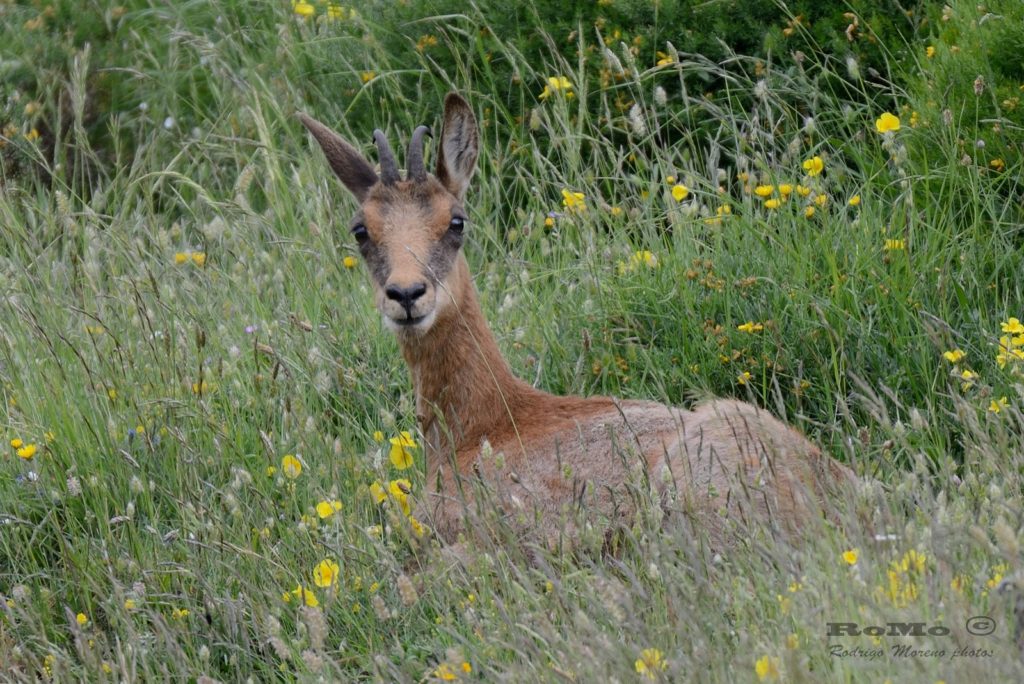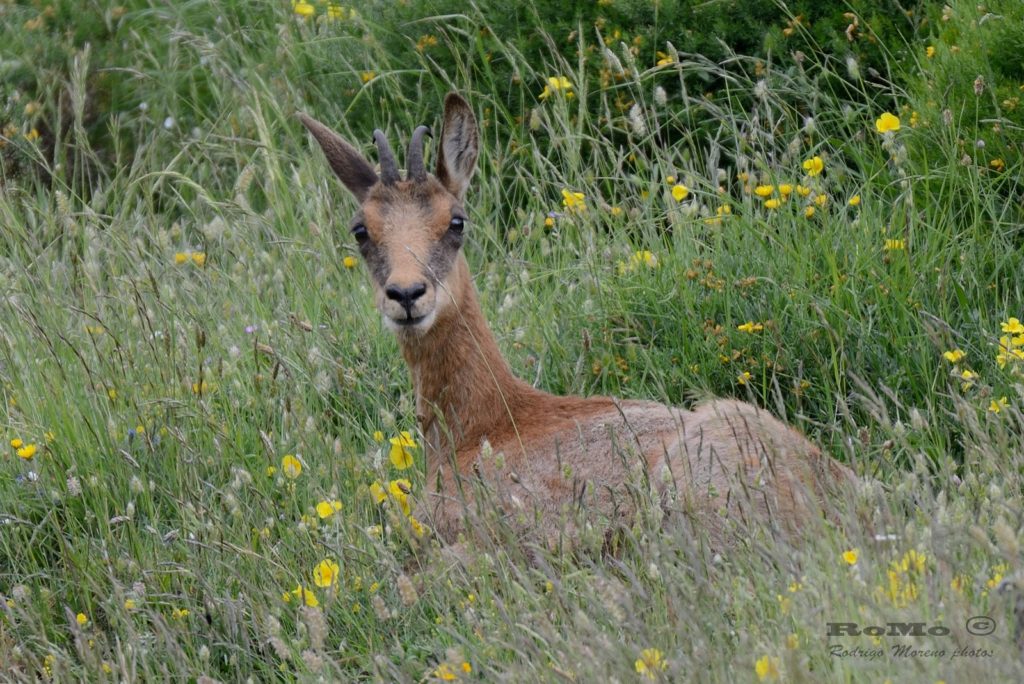
Discreet and cheeky. The Chamois (Rupicabra rupicabra)
The chamois' horns are of cutaneous origin, they develop permanently from the frontal bone. They are not deciduous bone productions, as in the case of deer. They appear from 3 or 4 months, in both sexes. Growth stops in winter, due to food shortage, to resume in spring. This is very important during the first 3 or 4 years, particularly during the second, when the hooks form. But, what about this case? Have you ever seen it?

Hunted in TELLA (Huesca), in 2012
A little more about the Chamois
The chamois , also known as the sarrio ( Rupicabra rupicabra ) is a bovine of the subfamily Caprinae , apart from the Pyrenean chamois ( Rupicapra pyrenaica ). The chamois is usually found in mountain ranges in Europe such as the Pyrenees , Pre-Pyrenees , Picos de Europa , Alps and many more.
The chamois usually moves between 500 and 3000 metres of altitude, preferably in rocky areas. It usually measures between 110 and 130 centimetres in length, the height at the withers is between 70 and 80 cm and its weight can vary between 20 and 30 kg. Males are larger than females, also with darker and more marked colours and larger antlers. Their hooves are fully adapted to climb steep and rocky mountains, or in winter to walk on ice without slipping, and their horns are not very large and are hook-shaped.

In summer, the chamois has a reddish-brown coat, with a whitish belly, throat, snout and buttocks, a black band between the mouth and eyes, and the back of the tail is also black.
In winter, the coat is much thicker and darker, and the black parts are now much more prominent. The back, legs and back of the neck become darker. In addition, there is a very marked black band from the back of the ears to the base of the neck at the front.
Chamois are animals that live in small herds, consisting only of males (sometimes alone) or only of females and their young. Both sexes only come together during the mating season.

The chamois or ibex have a very developed sense of sight, smell and hearing, which helps them to escape from predators such as wolves, lynxes, bears or humans. In winter, one of their greatest dangers is snow avalanches, since they are animals of high mountains are often very exposed to this. They are diurnal animals, although their greatest activity is early in the morning or late in the day.
Spanish chamois come into heat between October and November, while in Europe they come later, in December. The males engage in continuous confrontations while following the female herds. Gestation lasts about 20 weeks. The offspring reach sexual maturity between 2 and 4 years of age, and if it is a female it will do so before the males.
In recent years, Rupicapra pyrenaica has been affected by pestvirus, a highly contagious disease recently discovered and caused by an infectious agent that attacks the immune system of chamois, weakening them to the point of death. Although at present, it seems that the death rate from this disease has decreased.



